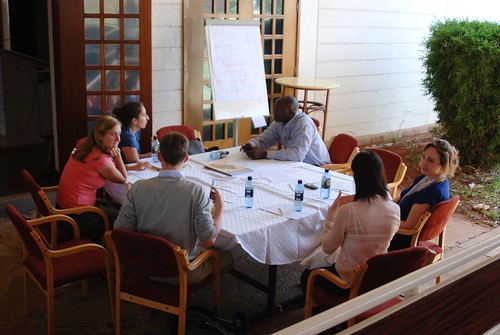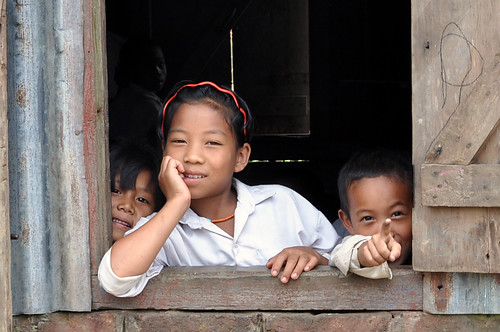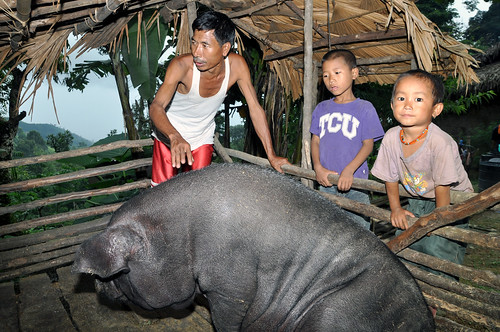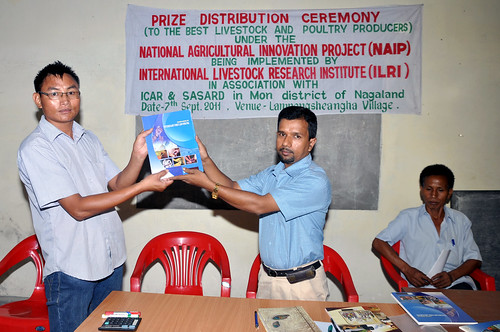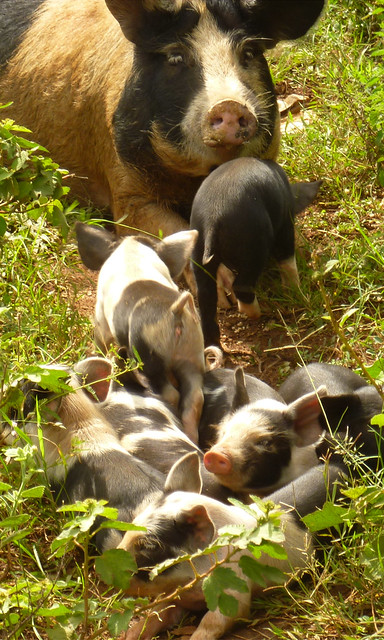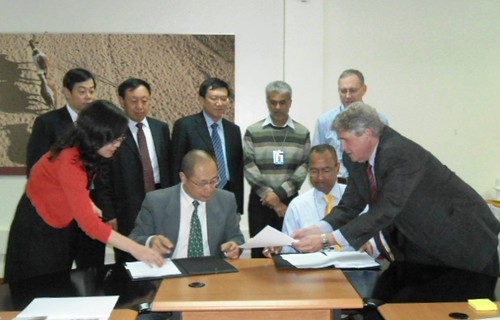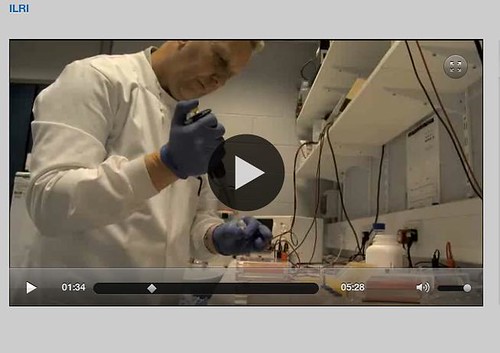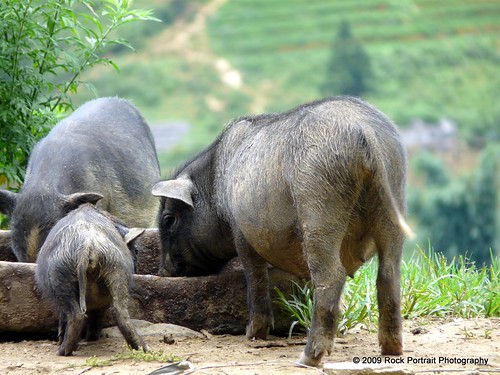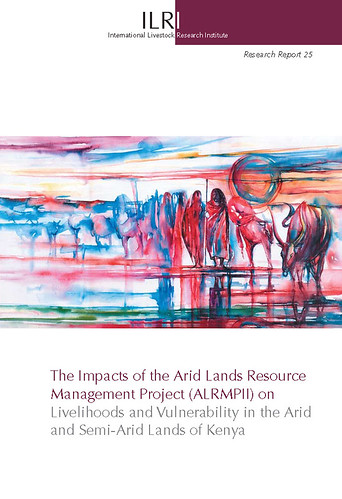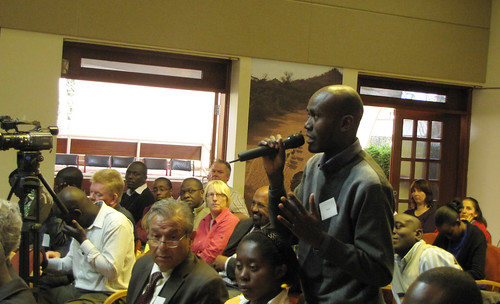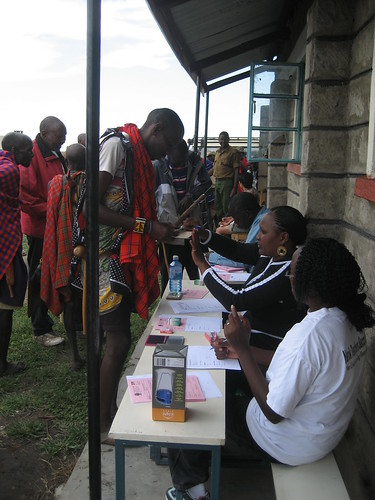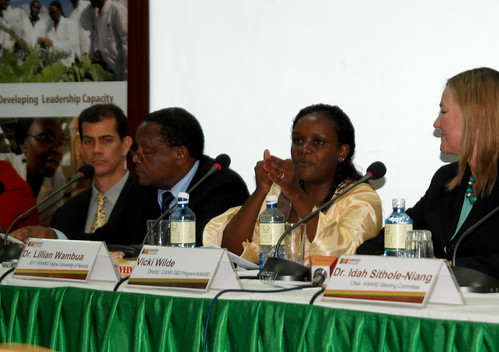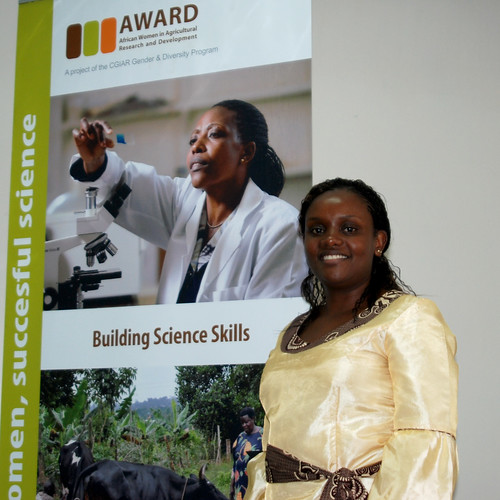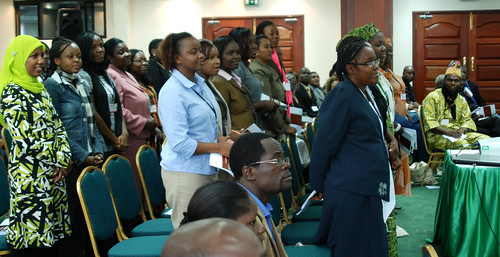Policymakers, practitioners and community users discussed, this week, ways to improve the sustainable management of Africa’s drylands at a workshop held at ILRI in Nairobi (photo credit: ILRI/Samuel Mungai).
Researchers, policymakers and livestock experts from Africa and the UK met this week to discuss the impacts of land use changes on African drylands in efforts towards shaping policies that will enhance the sustainable management of these ecosystems.
In a workshop held on 14 February 2012 at the Nairobi headquarters of the International Livestock Research Institute (ILRI), community representatives, scientists and specialists in ecology, economics and anthropology discussed research that is expected to shape policies for the improvement of poverty alleviation and ecosystems management in eastern Africa’s dryland ecosystems.
African drylands are fast approaching a tipping point brought about by policy-driven changes in land tenure that have transformed communal lands into private enclosures and wildlife conservancies and the closing off of open access lands that have limited livestock and wildlife mobility. These changes have led to environmental and social consequences that are threatening livestock production and and the livelihoods of pastoral people who depend on these lands.
‘This project will get to the heart of the complexities of drylands management because it is seeking to put pastoralists at the centre of managing their resources,’ said Jimmy Smith, the director general of ILRI. ‘Findings from this project will help us understand how livestock keepers interact with policies, the environment and their economic opportunities,’ said Smith.
The workshop which is part of a 24-month project known as the ‘Biodiversity, Ecosystem services, Social sustainability and Tipping points in African drylands (BEST).’ It is being carried out by a consortium of international partners who include ILRI, the Institute of Zoology, London, University College London and the African Technology Policy Studies Network who are using their expertise in natural resource and biodiversity assessment, natural resource management and communication to analyze the impacts of the changes taking place in dryland ecosystems. Other partners in the research include the Tanzania Wildlife Research Institute and the Association of Strengthening Agricultural Research in Eastern and Central Africa. The project is funded by a consortium of the Department for International Development and the UK’s Natural Environment Research Council and Economic and Social Research Council.
‘We hope to address the very rapidly developing and severe challenges arising in east African arid- and semi-arid rangelands, particularly in Ethiopia, Kenya and Tanzania,’ said Katherine Homewood, an anthropologist with the University College London and the principal investigator for the project. ‘These changes have led to significant opportunity costs for pastoralists who depend on livestock production in these areas; some of whom have been displaced or dispossessed of their livelihoods,’ Homewood says, ‘because marginal areas have become immensely important to a huge variety of competing land uses like mining, biofuels production, crop farming and wildlife conservation.’
Despite these changes, findings indicate that livestock production remains the key source of income for pastoralists and the project, now in its first phase, will investigate how households are responding to the changes in dryland ecosystems, how pastoralist households invest time, labour and capital into livestock, farming or wildlife tourism in light of these changes and the consequences of these choices on poverty reduction, biodiversity and the local and national economies.
‘Results from this project will provide the government with useful information on biodiversity management, environmental reporting and land use practices by offering up to date information on social and environmental interactions that are essential for management of environmental risks in rangelands,’ said Ali Mohammed, Permanent Secretary in Kenya’s Ministry of Environment and Mineral Resources, who officially opened the workshop.
The project has been implemented for just under one year and project partners used the workshop to draw on existing expert knowledge of dryland systems. This information will be used in modeling approaches for further analysis of dryland ecosystems. Among others, participants called for better evaluation of the opportunities and tradeoff emerging from differences in land tenure systems, disparities in distribution of tourism income and displacements of pastoralists and diminishing livestock productivity. Information from this workshop will guide research and deliver findings that will help evaluate policy scenarios and give insights into ecosystem services to inform policymaking and practice.
More on the Biodiversity, Ecosystem services, Social sustainability and Tipping points in African drylands project: https://www.ilri.org/best
Watch a 10-minute film about finding ways of balancing the needs of people, lands and wildlife:
http://blip.tv/ilri/counting-in-a-disappearing-land-people-livestock-and-wildlife-1458292

